Icy Roads: News and Updates Blog
January 2011 Archives
The road ice hazard defined: what it is, and isn't
The road ice hazard is defined by the conditions and situations that cause the highest impacts to life and property:
- High-speed travel (above 45mph, interstates, rural 2-lanes)
- Element of suprise (including bridges)
- Subtle and intermittent icing (not visibly prominent)
- Light winter precipitation (including snow and freezing rain)
- Freezing rain/drizzle/fog (invisible ice)
In essence, the road ice hazard is primarily highway-speed travel during light winter precipitation events, when driver awareness is low and visual indicators are few. The majority of deaths and serious injuries occur during these conditions. To narrow the definition of the hazard even further, we can cite the phenomenon of high-speed oversteer. Oversteer is the primary cause of loss of vehicle control at high speeds, and most fatal accidents begin with one or more vehicles entering an oversteer condition. Oversteer at highway speeds is nearly impossible to correct and leads to a vehicle spinning out, leaving the roadway, rolling over and/or impacting oncoming traffic.
It might be helpful to list what the road ice hazard is not:
To sum it up, the road ice hazard isn't the minor fender-benders or slide-offs common during snowstorms. The hazard is primarily the serious, highway-speed crashes during light icing events that take drivers by surprise.
Icy road "winter driving tips" news stories
All winter long, a popular news feature piece done by virtually all stations and networks at least once per year is the "winter driving tips" story. The professional driving expert is interviewed (commonly in an icy parking lot) and the viewer is advised on items such as making sure their tires are in good shape, to place a sandbag or two over the rear wheels, to turn into a slide and to keep their windshields clear of ice and snow.
While most of the tips conveyed by these 'classic' news stories are good, the pieces are frequently lacking in emphasizing the only true way to stay safe when icing conditions are present or expected: Slow Down! Keep speeds below 45mph or simply stay home.
No tire tread pattern, driver skill/technique, antilock brake or traction control system can overcome the laws of physics regarding the coefficient of friction between rubber and ice. The only true way to mitigate the danger is to reduce speed. New tires, sandbags and low-speed practice in parking lots will not prevent or prepare a driver for loss of control at highway speeds, which is the cause of the vast majority of road icing fatalities and major damage/injury crashes.
When road icing is present or imminent, the driver must respond with a significant reduction of speed full-time, or a postponement of travel (if possible). Doing so will virtually eliminate the risk of a major accident. There are no tips and tricks that allow travel at normal speeds on icy roads! A driver must accept the increased transit times as a fact of the laws of physics when icing is present or expected. Most of the "winter driving tips" commonly repeated in articles and TV segments will actually do little to keep you alive the next time road icing threatens.
At least 22 lives lost in December 15-16 freezing rain event
As of 10:30AM CDT Friday, news reports show that at least 22 people have lost their lives in road ice-caused crashes due to the freezing rain event on Wednesday and Thursday. This post will be updated if and when further reports are counted.
The state-by-state breakdown of the fatalities is as follows:
| December 15-16, 2010 freezing rain road ice fatalities |
| State |
Fatalities |
| Missouri |
6 |
| North Carolina |
4 |
| Illinois |
3 |
| Alabama |
3 |
| Mississippi |
3 |
| South Carolina |
1 |
| Georgia |
1 |
| Kansas |
1 |
| Total |
22 |
|
New icyroadsafety.com accident video from Shiloh, IL
VIDEO: CBS News story page
Blowing snow created very icy conditions in the St. Louis region on Sunday. Several accidents and spinouts on I-64 at Shiloh, IL are caught on tape, including a serious tractor trailer/car crash. This video is available for viewing at the CBS News web site and is currently airing nationwide on several outlets.
Photos from the event (click to enlarge):
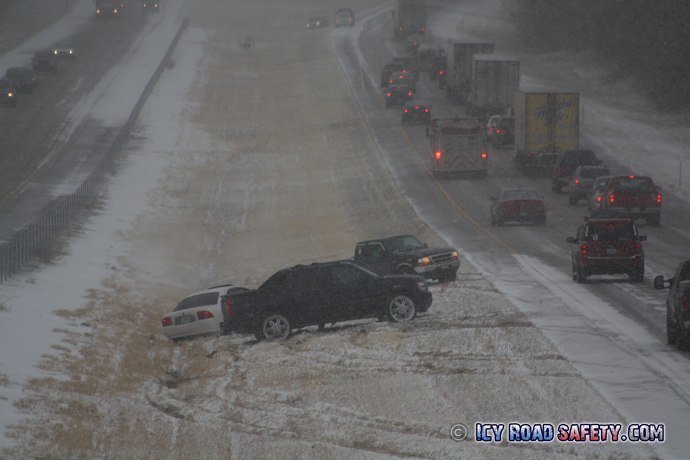

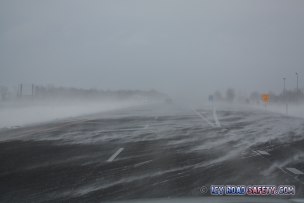  

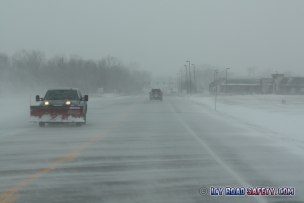  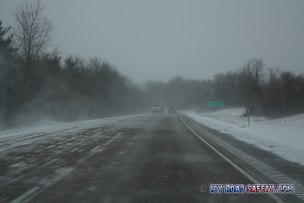

2010 Thanksgiving travel season will be treacherous
The full spectrum of road icing weather - including snow, sleet and deadly freezing rain - will be present across a large portion of the USA this week, making this year's Thanksgiving travel season a dangerous one. Please keep an eye on the weather conditions along your journey, and postpone your travel plans if freezing rain/drizzle is expected anywhere along your route. If you must travel when these dangerous conditions are possible, know the signs of road icing and slow down when you suspect the hazard may be present.
Remember that these types of conditions kill and injure more people than all other types of severe weather combined!
For the media: TV cameraman/reporter safety
Watch these videos of news vehicles involved in icy road crashes: Semi on Texas bridge, New Mexico snowy interstate
Covering accident scenes is part of the everyday routine for the news photographer and reporter, and during the winter, there is no shortage of this dramatic subject. However routine as it may be, during an icy road situation it can be one of the most dangerous of assignments. Photographers and reporters working in the field should take note of these points, and assignment desks/producers should also be aware of these dangers and liabilities before considering sending crews out to cover stories of this type.
Parking near/along an icy road is a common but highly dangerous practice in news coverage. Not only does it put the crew in danger of being struck by out-of-control vehicles, it can also trigger accidents when drivers brake in response to the news vehicle, reporter or cameraman being close to or on the roadway. The initial accident that happens on an icy road is frequently followed by more crashes in the same location. One should expect additional vehicles, including tractor-trailers, to lose control at any time and crash into the existing accident scene at high speed. Many fatal accidents happen during these 'secondary crashes' involving people standing outside on or along the road.
- Coverage of icy road events should be done primarily from the air. Sending crews out on the road in icy conditions introduces a high risk for on-the-job injury and property damage.
- Crews should park their vehicles as far off of the road as possible - never on the road or along the shoulder. If no safe parking is available, keep moving.
- Photographers and reporters should set up only behind barricades, guardrails or elevated embankments that provide protection from out-of-control vehicles.
- Urge motorists and bystanders to stay away from the roadway. People involved in accidents should either stay in their vehicles or, if able, drive or walk off of the roadway as far as possible. Never stand or linger on the road to flag passing cars or inspect vehicle damage.
- Live shots should never be located anywhere along an icy road or in any configuration that could cause drivers to reactively and suddenly apply their brakes (such as bright lights directed toward traffic).
- Photography and video of accident scenes by ground-based crews should ony be assigned after EMS/law enforcement has arrived and the roadway shut down from moving traffic.
The motivation to capture compelling footage or photographs in a dramatic situation can easily override common sense for the newsperson covering an icy road story. Encourage your organization to make safety on the roads during winter weather a high priority.
Road ice risk zones: Plains, Midwest rank highest

In "Tornado Alley", the weather hazard that is far more likely to injure or kill is not the supercells and tornadoes in the spring.
The map above shows where fatal icy road crashes are most likely to occur based on two seasons of data (2008-2010). The data shows that the Midwestern and Plains states have the highest incidence of road ice-related deaths. These are regions that traditionally place the majority of their weather awareness on convective severe weather (hail, tornadoes and high winds) that inflict comparitively much less human casualties:
| Comparing 2008-2009 Average Annual Fatalities from Tornadoes [1] and Road Ice [2] |
| State |
Tornado
Fatalities [1] |
Road Ice
Fatalities [2] |
| Oklahoma |
7 |
15 |
| Kansas |
2 |
14 |
| Texas |
0 |
19 |
| Iowa |
6 |
22 |
| Missouri |
11 |
20 |
| Minnesota |
1 |
27 |
|
Sources: [1] NOAA data: 2008, 2009; [2] icyroadsafety.com, based on published media reports
Probable explanations for the Plains/Midwest region's higher road ice fatality numbers are the fact that travel often takes place on rural highways at high speeds, the average trip/errand requires more mileage (increasing the risk of ice encounters), and all travel must be done by automobile (public transportation or walking/biking is not an option). In addition, unlike in northern states, icing events in the Midwest/Plains tend to be intermittent and widely spaced in time rather than season-long. Intermittent icing events cause more accidents simply because motorists are caught unprepared. In general, the fewer road icing events a location expereinces per winter, the greater the rate of fatalities per event results.
Areas where roads are snow and ice covered most of the winter (such as the Rockies and the extreme northern regions) tend to have a lower concentration of road ice deaths due to the population being well-adjusted to the hazard. Most road ice fatalities in the Rockies, for instance, occur with out-of-state travelers passing through on the major highways. Major urban areas - such as Chicago and much of the New England region - also tend to have lower fatality rates, most likely due to shorter distances on the average trip/errand, available public transportation and slower speed limits on most roadways.
NOAA weather hazards graph: adding road ice
NOAA has finished compiling preliminary data for weather hazards during the 2009 season (linked here). Here is the 2009 graphic:

Courtesy NOAA
Historically and currently, icy road fatalities are not counted in these datasets. So, here I added a bar to the NOAA graphic that includes the 2009-2010 winter season total for road ice deaths:

2010-2011 icy road season begins in 1 month
We're still in the heat of summer here in the USA, and it's hard to imagine the prospect of snow, ice and freezing temperatures. But it won't be long before the road icing threat begins its annual return. Already, parts of the highest elevations in the Montana mountains have seen snowfall associated with a cool upper trough passing through the northern US. As we enter the month of September, freezing levels will drop in elevation - and icy bridges and roads will begin to threaten travelers using the many highways and interstates that cross the Rocky mountains. Not long after that, snow and subfreezing temps will begin in the northern states - and by late October, the Appalachians and New England states will have likely seen their first snows of the season.
The most important preparation you can make for you and your family is to educate yourself and those around you on the awareness of this hazard, and how to respond when the threat arises. Take a quick refresher course through this site and invite those you care about to do the same.
Recent Blog Posts
- Developing a road impact parameter for forecast models and mesoanalysis - October 29, 2021
- The deadly Fort Worth, Texas pileup of February 11, 2021: Its cause, contributing factors and future prevention - March 31, 2021
- Major road icing event affects 41 states - January 14-18, 2018 - January 20, 2018
- Trip to Mississippi and Alabama for Southern US winter storm - January 5-7, 2017 - January 22, 2017
- High-impact freezing rain/drizzle road icing event from Oklahoma to the East Coast - December 20, 2016
- New educational winter driving videos released, more planned - November 21, 2016
- "Icezilla" freezing rain disaster in the northeast US - January 19, 2015
- December 30-January 2 Oklahoma/Texas icing event sequence - January 2, 2015
- Freezing rain disaster - November 22, 2014 - November 23, 2014
- Report: Major winter storm in the Deep South, 1/28 - January 30, 2014
- Report: High Risk road icing event in south Texas/Louisiana - January 26, 2014
- Winter tires: not the solution for preventing icy crashes - December 13, 2013
- Preliminary low estimate of December 3-8 toll - December 9, 2013
- The Top 7 Icy Road Myths - December 6, 2013
- Aren't icy road crashes caused by driving too fast for conditions, not ice and snow? - November 14, 2012
- Road icing news for January-February 2012 - February 25, 2012
- Commentary on the recent viral WV pileup video - January 8, 2012
- Significant road icing outbreak: Monday, January 2, 2012 - January 2, 2012
- No vehicle can safely go highway speeds on icy roads - December 23, 2011
- Another case for "Road Ice Warnings": December 8-9, 2011 light snow event - December 10, 2011
- A big thanks to those helping raise road icing awareness - November 18, 2011
- 15 road icing deaths in the past week: estimating the full impact - November 4, 2011
- 2011-2012 road ice season in the US already in full swing - October 22, 2011
- Coming this winter: another 2011 tornado season toll - July 21, 2011
Past Blog Archives
- April 2010 - January 2011 posts
- December 2009 - March 2010 posts
- November 2009 posts
- October 2009 posts
- March-April 2009 posts
- February 2009 posts
- January 2009 posts
- December 2008 posts
Educational Winter Driving Videos - Watch for Free:
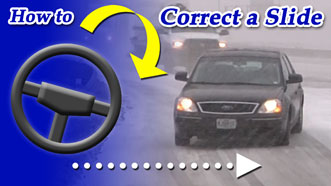 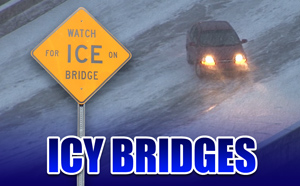 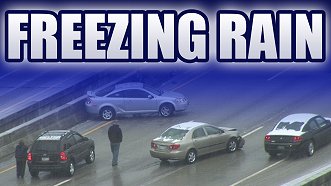
Home | Risk | Stats | Accident Video | Icy Bridges | Tips | Warning Signs | If You Slide | If You Wreck
1,836
Average annual
deaths in the US
from icy roads
136,309
Average annual
injuries in the US
from icy roads
[ More Statistics ]
|
|











